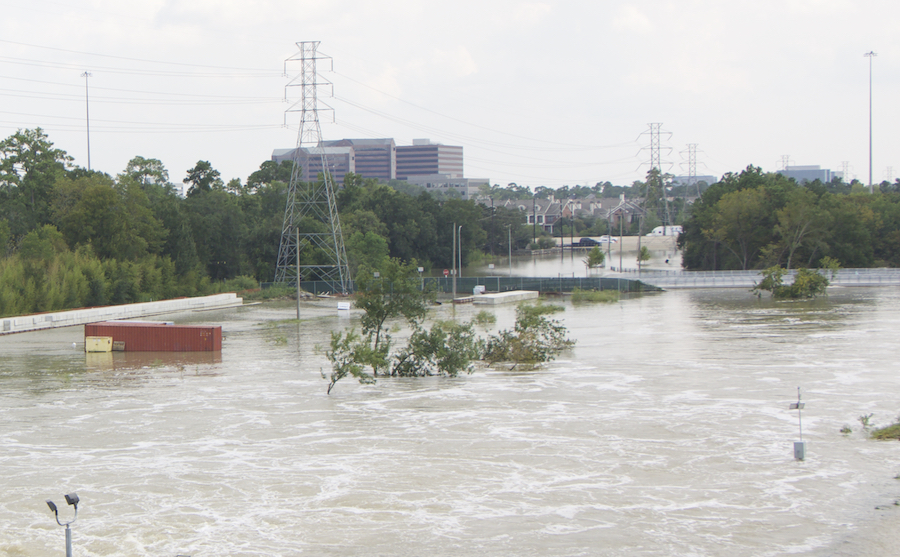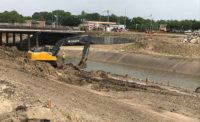Two months after Hurricane Harvey struck Houston, Harris County Judge Ed Emmett, who is also the county’s director of emergency management, proposed a set of 15 responses, including some new construction and restoration work, aimed at protecting Houston from future floods.
“Harvey was the worst flood in our history, but Harvey was not a singular event. It followed two other major rain events in recent years. This area has seen three of these so-called 500-year rains in the past two years,” Emmett said Oct. 25. “Either our definition of a 500-year rain needs updating or we can hope that we are safe for the next 1,500 years. Obviously, we cannot assume the latter.”
Discussions on the construction of a third reservoir to join the existing Addicks and Barker reservoirs had been ongoing, but Hurricane Harvey reframed the discussion. Emmett believes a third reservoir would protect Harris County’s west and northwest sections. Instead of waiting on federal funds, he proposes to fund the reservoir with the state’s rainy day fund, and incorporate the reservoir into a larger project that would create a state or national park for the Katy Prairie.
Recommendations for the U.S. Army Corps of Engineers include the restoration of the dams and detention areas of Addicks and Barker reservoirs to first-class condition including removal of dirt and vegetation within the reservoirs as necessary.
Emmett also calls for the Corps to immediately fund the four Harris County Flood Control District projects now ready for completion: Brays Bayou, White Oak Bayou, Hunting Bayou and Clear Creek.
In mid-October, the Harris County Flood Control District announced that its Lower White Oak Bayou Channel Restoration Study determined options for the natural restoration of Lower White Oak Bayou, rather than replacing the aging concrete channel that runs north of downtown Houston. HCFCD reports that construction cost estimates for restoring this one-mile stretch range between $30 million and $60 million, and could take at least 5-10 years to complete. However, both a sponsor and funding source would be necessary for any future restoration project to proceed.
Additionally, the Texas Water Development Board announced on Oct. 17 financial assistance of $47.2 million to Harris County for a stormwater management project at Brays Bayou watershed. It would increase the capacity of the bayou to move stormwater through it. This is part of a larger project that involves channel-widening and detention-basin construction to reduce flooding impacts across the entire watershed.
A subsequent recommendation for HCFCD calls for the agency to develop comprehensive plans for every major watershed in Harris County, with immediate attention given to the entire length of Buffalo Bayou. The agency is also charged with developing a scheme to divert stormwater around downtown Houston, either through a canal or tunnel system.
Emmett’s other recommendations include using Lake Houston and Lake Conroe as flood control facilities as well as water supplies. This would include restoring Lake Houston to maximum storage capacity and creating retention/detention capacity upstream of Lake Houston.
“I do not pretend to have all the right answers, nor do I see myself as an expert in flood control. My purpose today is to present a broad vision of what is needed and to challenge those involved in seeking solutions to think boldly,” Emmett says.
No timelines or budgets for these various recommendations have been suggested at this point.
Additional recommendations on the 15-point proposal included: creation of a regional flood control/water management organization; immediate revision of FEMA flood plain maps to reflect the impact of Harvey; development of a state-of-the-art flood warning system and localized evacuation plans by the Harris County Office of Emergency Management; and identification of all underpasses that have the potential for drowning and equipping them with automatic barriers or a comprehensive manual plan for closures.
Emmett also called for federal, state and local governments to implement a buyout and/or elevation program for all homes located in the 100-year flood plain or that have flooded repeatedly. Efforts have begun on that front already, as the Harris County Commissioners approved a $20-million home buyout program in late September.




